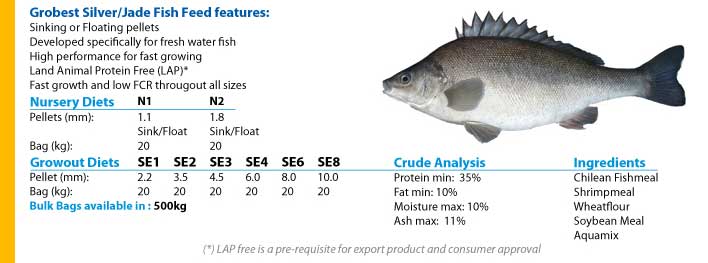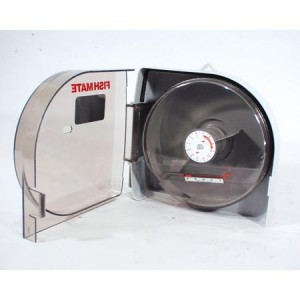How long will Fish Pellets last?
Commercial Fish Pellets. How long do they last before they lose their nutritional value?
Recently on the Aquaponics forums there was some speculation from people who found they were still using commercial fish pellets that were 18 months old and were still being fed to their fish.
Some people insisting that their feed still looked good and appeared not to have aged or turned bad so it must have been good. Other folk challenged the notion and insisted that the fish pellets must have preservatives added to the feed in order to keep from spoiling. Could this be true? Do fish pellets contain preservatives that are stored in the fish and then passed onto us when we eat the fish? Whats the real story behind fish pellets? How long should you keep them and will they still be okay to feed your fish a year from now?
How long will Fish Pellets last?
We spoke with Andrew from Grobest Australia, manufacturers and distributors of fish pellets for the aquaculture industry who assured us that there are absolutely no preservatives added to Grobest fish feed. Andrew recommended that people who buy bags of fish food keep them in a dry spot in the garage and use up all the feed within 6 months. Thats when the feed is stored in an airtight container, away from light, no humidity or moisture but at room temperature. We keep our feed in a garbage bin with snap on fasteners. Feed kept in that condition will last up to 6 months.
After 12 months, Andrew felt that the nutrients and vitamins that are in the fish pellets would deteriorate. The best way to maximize the nutritional life in your fish pellets is to freeze them in smaller bags. Kept frozen Andrew felt the feed would last indefinitely. Fish pellets kept refrigerated at a lower temperature (not frozen) in a cold room would last longer, up to 12 months.
Grobest pellets also have something added to their feed called Aquamix. When questioned, Andrew said this mixture contained essential minerals and vitamins necessary for healthy fish growth.
Fish Pellet Sizes
Fish pellets come in different sizes to accommodate the size of your fish. There are nursery feeds and Growout diets suitable for a wide range of fish jaws. We tend to get a 20 kilo bag of SE4 size fish pellets (around $60) and crush the pellets with a pair of pliers to feed to small fingerlings. The SE4 will also feed larger fish but on the whole its to get the pellet to match the size of your fish. Maturer fish older than 12 months have no problem feeding on larger sized pellets when they hit the water.
How much fish food do you need?
A 20 kilo bag will last us a long time. In our 1000 litre fish tank we stock between 30 to 40 fish. We have a mixture of Barramundi, Jade Perch and Catfish all living together in harmony. No problem with the fish fighting or disrupting one another providing they are about the same size. Small fish thrown in will be eaten by the larger fish. Be warned about mixing different fish sizes together.
A 10 kilo bag of fish food will last us about 6 months. Faster if fed through a fish feed dispenser. We hand feed our fish three times per day just enough feed to disappear within a minute or two. After a while you will get a feel as to how much feed your fish will tolerate. Fish tend to eat more during their preferred climate conditions. Our fish like warm tropical conditions and eat more feed over summer than they do in winter. Sometimes due to barometric weather conditions, an approaching storm etc, they will go off their feed for a day or two.
Sinking or Floating Pellets?
When ordering fish pellets you can specify what type of fish pellet you required – floating or sinking. Some fish feed best on sinking pellets. Our fish all attack floating pellets with gusto. We can also monitor any uneaten food as it floats and remove it easily. Pet dogs and cats love fish pellets. Any dropped on the ground get eaten by our dogs.
There is no difference between the two type of pellets. The extruded mould that makes the pellets is either pressurized more densely so it causes the pellets to be more compacted which causes them to sink rapidly or they are lightly pressurized in the mould so they expands slightly, trap more air and are termed as floating pellets. Around 10% of floating fish pellets however do tend to sink.
Big Feeds or Small Feeds?
Andrew from Grobest recommends lighter feeds more frequently through the day rather than one big feed once a day. Dumping a heap of fish pellets into your fish tank will cause an ammonia spike that can cause problems if your system is new. Some larger systems use commercial fish feeders that drop a small portion of feed directly into your tank numerous times through the day. This is really a great idea to encourage your fish to strike quickly and an easy way to fatten them up quickly if you are unable to fuss around the tank all day. Ad-hoc backyard feeding methods will mean your fish will take longer to grow out. Giving your fish the necessary protein, keeping your fish pellets fresh and frozen at regimented serving portions throughout the day and into the year is a great way to fatten your fish quickly.









Recent Comments